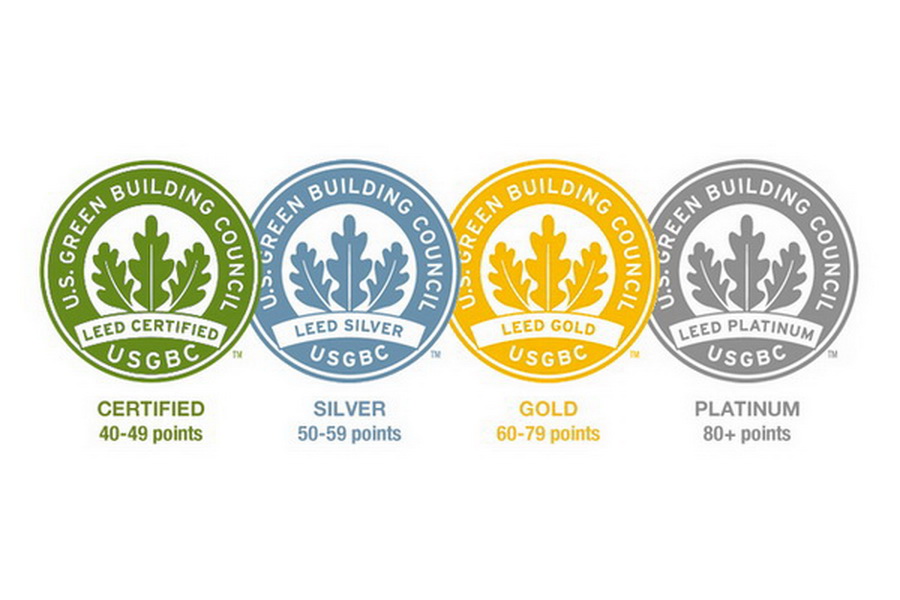
Da ormai più di dieci anni il LEED è approdato in Italia ed è rapidamente diventato un riferimento, sebbene con una certa onestà non sempre sia stato facilmente applicabile.
Il LEED (Leadership in Energy and Environmental Design) è un protocollo americano per la misurazione dell’impatto energetico ed ecologico dei nuovi edifici e più recentemente per major renovation di edifici esistenti. È un sistema di classificazione a punteggio che alla fine definisce l’efficienza energetica/ambientale dell’edificio sulla base di argomenti importanti come sostenibilità del sito, gestione delle acque, innovazione, materiali impiegati, ecc. Alla fine il GBC (Green Building Council), che anche in Italia provvede servizi di consulenza e certificazione, dichiarerà l’edificio CERTIFICATO (il più banale del punteggio), ARGENTO, ORO o PLATINO.
Da quando GBC Italia ha iniziato a offrire i propri servizi anche le aziende produttrici di arredamenti e pareti divisorie per l’ufficio è iniziata una specie di gara di marketing per l’esibizione di un fantomatico Certificato LEED, in totale contraddizione con la definizione stessa – il LEED non è un certificato ma una misurazione, che paradossalmente potrebbe essere fatta anche alla vostra prossima casa al mare – soprattutto a motivo del fatto che in una piccolissima percentuale (6/8 punti su 110) i prodotti impiegati per arredare gli spazi possono contribuire ad aumentare il punteggio ottenibile.
Non si capisce bene se le aziende del mercato abbiano ricevuto la spinta dai propri clienti o se il Marketing Department abbia invece lavorato per cercare nuovi clienti. Fatto sta che oggi molti prodotti risultano essere LEED-compatibili e riportano sulle proprie schede tecniche il marchio GBC più o meno legittimamene. Ma ne è valsa la pena? Davvero i maggiori contractors italiani o stranieri propongono le aziende manifatturiere sulla base di questi pochi punti? E, più onestamente parlando, è obiettiva l’immagine di un’industria che diversifica in maniera massiccia la programmazione produttiva di una commessa per impegnarsi a mantenere fede a temi come contenuto di riciclato, emissioni di VOC o gestione di rifiuti industriali?
LEED AND PARTITION WALLS – For more than ten years, LEED has landed in Italy and has quickly become a reference, although with some honesty it has not always been easily applicable.
LEED (Leadership in Energy and Environmental Design) is an American protocol for measuring the energy and ecological impact of new buildings and more recently for major renovations of existing buildings. It is a scoring classification system that ultimately defines the building’s energy / environmental efficiency based on important topics such as site sustainability, water management, innovation, materials used, etc. In the end, the GBC (Green Building Council), which also provides consulting and certification services in Italy, will declare the building CERTIFIED (the most trivial of the score), SILVER, GOLD or PLATINUM.
Since GBC Italia has started offering its services also the manufacturers of furniture and partitions for the office has started a kind of marketing competition for the exhibition of an elusive LEED Certificate, in total contradiction with the definition itself – LEED is not a certificate but a measurement, which paradoxically could also be done at your next beach house – above all because of the fact that in a very small percentage (6/8 points out of 110) the products used to furnish spaces can contribute to increase the score obtainable.
It is not clear if the companies in the market received the push from their customers or if the Marketing Department instead worked to look for new customers. The fact is that today many products are LEED-compatible and carry the GBC mark on their technical data sheets more or less legitimately. But was it worth it? Do major Italian or foreign contractors really offer manufacturing companies on the basis of these few points? And, more honestly, is the image of an industry objective that massively diversifies the production schedule of a job order to commit itself to keeping faith with topics such as recycled content, VOC emissions or industrial waste management?